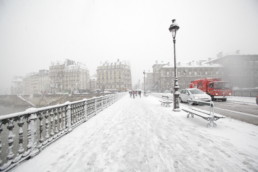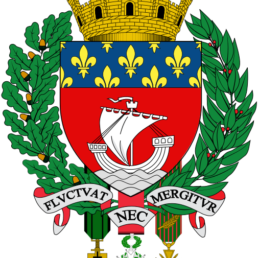The comprehensive Paris Adaptation Strategy is transforming the French capital into a climate-resilient city, focusing on securing resources and protecting the well-being of residents.
In 2015, Paris implemented its Adaptation Strategy, a framework unanimously approved by the Paris City Council in September 2015, aiming to adapt to climate change risks and their impacts on the city’s residents and resources. The strategy sets out four priority areas: protecting Parisians against extreme climate events; ensuring water, food, and energy supply; living with climate change; and fostering new lifestyles and boosting solidarity. As such, 30 goals and 35 actions have been identified and are now under implementation, monitored continuously.
1 million m2 of green roofs constructed by 2020 as part of the Adaptation Strategy.
Cities100 – 2016
Such actions include securing the city’s food supply, aiming to reach 30 hectares of urban agriculture by 2020; monitoring how much of the city will be impacted by power failure in case of 100-year river flood; and increasing the area and length of the city’s cooling pathways during heat waves. Also, helping Parisians cool down during extreme heat, the strategy ensures that all residents live within a seven-minute walk of a cool place and mandates that city parks remain open 24 hours a day during heat spells.

The challenge
Paris faces a wide range of challenges due to climate change, such as heat waves, drought, flooding, fires, food and water security, and many more. The Paris Adaptation Strategy takes into account all known climate-related challenges, and sets out clear objectives for how the city can respond and adapt to these challenges while improving the resilience of the city.
Co-benefits
Economic The strategy aims to have 25% of food consumed in Paris be locally produced by 2050, expanding the market for urban agriculture.
Environmental Greening actions taken under the strategy will help preserve and encourage more biodiversity in the city.
Health Parisians have access to new cooling options during heat spells, reducing the amount of heat-related health issues.
Social By constructing pools and increasing the amount of green spaces, residents have a new place to socialize during the summer.
About Paris
Paris is the capital and most populous city of France, with an administrative-limits area of 105 square kilometres (41 square miles) and a 2015 population of 2,229,621. The city is a major rail, highway, and air-transport hub served by two international airports. Paris is especially known for its museums and architectural landmarks: its Louvre is one of the most visited art museums in the world.


